How to Become a U.S. Citizen for Today's Immigrants

Introduction: Becoming a U.S. citizen is not just about filling out forms—it's about starting a new chapter in a land of endless possibilities. I still remember how my mother prepared and waited for her moment to become a U.S. citizen. As the child of an immigrant, I can honestly say that I truly understand the dedication and perseverance you are taking to become a U.S. citizen. In this quick guide, I will break down the common stages you can expect on your journey to citizenship. I’ve taken the time to research the most up-to-date information available on the USCIS website to summarize for you. According to the U.S. Department of Homeland Security’s 2020 Yearbook of Immigration Statistics, over 700,000 people became naturalized U.S. citizens in that year. There are thousands of people around the world who dream of this moment, and for good reason. Amidst the anticipation, it's essential to have a roadmap to guide you smoothly through the process. To keep things simple, I will skip the legal jargon, so you can more easily imagine making your American dream a reality.
Stage 1: Know Which Road to Take Towards U.S. Citizenship
What to Know: There are two ways to become a U.S. citizen. The first is by birth. If you were born in the U.S., your birth certificate is your proof of citizenship. The second is through the USCIS naturalization process, which allows you to legally earn a certificate of citizenship.
Naturalization: Naturalization is your pathway to becoming a U.S. citizen. This legal process ensures you are prepared for the responsibilities of being an American. By following each stage of the naturalization process revealed in this guide, you can become a U.S. citizen.
Stage 2: Permanent Resident Card (Green Card)
What to Know: Immigrants become U.S. citizens by first applying for a legal Permanent Resident Card. If you don’t have a card, read our blog post, Your Journey to a U.S. Green Card: Simplified Steps to Your American Dream. The Permanent Resident Card allows you to legally work and live in the United States while you go through the naturalization process. Once you have your Permanent Resident Card, you will need to live in the U.S. for at least 5 years to demonstrate your commitment to becoming a citizen. If you married a U.S. citizen, your wait time is only 3 years. These waiting periods give you time to adapt and experience life as a future U.S. citizen.
Why it Matters: Think of your Permanent Resident Card as your backstage pass, granting you a sneak peek into the grand American concert. It's more than just a card; it's your pledge of allegiance to a new beginning. We’re excited for you!
Stage 3: Apply to Become a U.S. Citizen
What to Know: Now that you are a Permanent Resident of the U.S. and you have participated in the naturalization process for the required time period, you are ready to apply for citizenship. You will apply for citizenship through the United States Citizenship and Immigration Services office, where you will fill out the standard N-400 application form. The good news is that you don’t even need a pen. You can simply fill out the form online by visiting: https://www.uscis.gov/n-400.
What to Expect: The N-400 application is 20 pages long and organized into 18 sections. In many ways, the application is your chance to share a little bit about your life story. Where are you from? Do you have a family? Are you married? Where did you go to school? The questions are easy to answer because they're all about you and why you want to become a citizen. Think of it like inviting a stranger to join your family for dinner. The questions are similar to what any of us would ask a stranger to get to know them better. The USCIS provides a comprehensive 18 pages of detailed instructions to help you fill out the form correctly.
How Much Does it Cost to Become a U.S. Citizen? As of 12/2023, the USCIS filing fee was $640. Or, as we like to think about it, only $0.35 a day for 5 years—not too bad. You can also expect an additional fee of $85 for fingerprints and biometrics.
Stage 4: Study for Your Citizenship Test
What to Know: Once you have applied to become a U.S. citizen, you must prepare for the citizenship test. There are two things you must learn to become a U.S. citizen. One is conversational English. Two is the 100 U.S. Civics Questions and Answers. Want to know the best ways to study for your test and pass with confidence? Read our blog, How to Pass Your U.S. Citizenship Test with Confidence.
What to Expect: There are many free and paid resources to help you study for the citizenship test. Use your time to practice speaking, reading, and writing English. Challenge yourself to speak at the grocery store, the coffee shop, or wherever you feel comfortable trying out your new language skills. We have a list of language learning software we recommend in How to Learn English for the U.S. Citizenship Test. If you want to know how other people have passed their test with confidence, read: The Ultimate Guide to Acing the U.S. Citizenship Test: Your Roadmap from Start to Finish.
Stage 5: Get Ready for Your Big Day - The Interview!
What to Know: Now is a good time to take a deep breath. Reflect on how far you have come to make it to this stage of your journey. You followed the rules, used the N-400 form to apply for U.S. citizenship, and studied hard to learn English and the 100 Civics Questions. Great job!
By now, you have received a scheduled day and time to be interviewed by a USCIS immigration officer. Arrive on time and dress as if you are attending a job interview. This is an exciting opportunity, and you should prepare yourself for success. Good thing you studied! You are going to ace your interview.
What to Expect: This isn't just a formality. It’s a pivotal moment that allows officials to ensure that potential citizens understand and are prepared to undertake the responsibilities of citizenship. The test is given by a USCIS immigration officer who will conduct an oral interview with you to test your knowledge. How long is the citizenship test interview? On average, you can expect around 20 minutes. During the interview, you should be prepared to answer 10 of the 100 civics questions correctly and be able to use conversational English to speak, read, and write. If you are 65 years of age or older, you only need to answer 6 of the 100 civics questions correctly. If you want to know the best way to prepare for the interview, read: The Ultimate Guide to Acing the U.S. Citizenship Test: Your Roadmap from Start to Finish.
Step 6: Patience is Key
What to Know: After your interview, you won’t receive an immediate decision. The USCIS will take time to review everything before making a determination. Think of it like baking a cake; you need to let it rise until it's ready.
What to Expect: Citizenship is a privilege and an honor. This waiting period, although sometimes nerve-wracking, ensures that every application gets the due diligence it deserves. If you're wondering how long the U.S. citizenship process takes, the answer varies. Taking into account the 5 years as a Permanent Resident, from application to the oath ceremony, you can expect an additional 6 months to two years or more. Patience is key. Stay updated by checking your status online.
Step 7: Pledge Your Allegiance
What to Know: Once your application is approved, you will be invited to the Naturalization Oath Ceremony. This ceremony is significant. The oath goes beyond mere words; it symbolizes a commitment to upholding American values, laws, and responsibilities. Most ceremonies include a welcome video from The President of the United States, greeting you as a "fellow citizen". Hence, we can now proudly call you an official fellow citizen. Congratulations on your achievement!
Why This Matters: The tradition of oath-taking has deep roots, stretching back centuries. As you make this pledge, remember the countless others who've stood in your place, committing to contribute their best to the U.S. Curious about attire for the U.S. Citizenship Oath Ceremony? Check out our blog: What to Wear to the U.S. Citizenship Oath Ceremony.
Step 8: Celebrate!
What to Know: Your Oath Ceremony marks a significant milestone, worthy of celebration and perhaps a champagne toast. Many new American citizens organize gatherings with family and friends to commemorate their achievement. Plan a memorable party! Consider safeguarding your citizenship certificate with our elegantly crafted holder. We cherish it and believe you will too, recognizing the effort behind this journey.
What to Expect: Once you have your citizenship certificate in hand, consider dining at your favorite restaurant or hosting a home celebration. Becoming a citizen is a monumental achievement, and you've earned this celebration. Need ideas for your citizenship party? We've got a Pinterest board just for you (insert board link). As a new American citizen, you're now eligible to apply for a U.S. passport, update your driver's license, and register to vote. Remember to engage in democracy, volunteer in your community, and assist those in need. We are honored to call you an official fellow citizen.

Conclusion:
From the very spark of the idea to become a citizen, to the deeply moving moment when you place your hand over your heart and recite the Pledge of Allegiance, the path to citizenship is more than a series of steps—it's a transformative journey. It is woven from the rich tapestry of relationships, experiences, and the enduring pursuit of happiness. We wholeheartedly encourage you to chase your dreams; for every monumental journey begins with a single, determined step forward.
About the Author: This article is brought to you by Official Fellow Citizen®, a United States trademark brand dedicated to the American dream.

